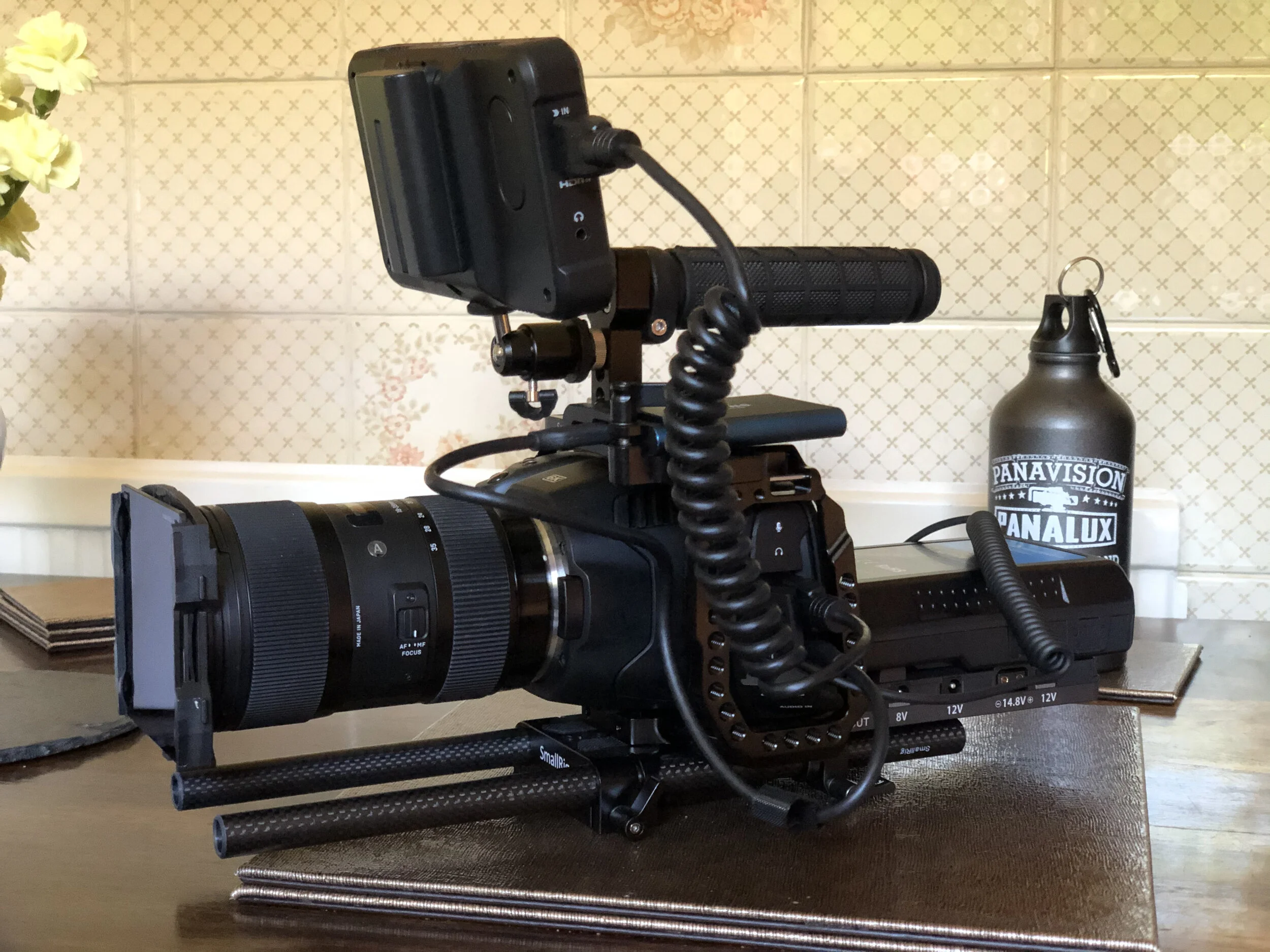BMPCC-6K Camera Tests
Film still from our short film ‘Isolation’ - Shot on the BMPCC6K
Recently the FreshCrewStudios team invested in the new Blackmagic Design Pocket Cinema Camera 6K to further enhance the quality and future proofing of our productions. As many people are aware, the new line of Blackmagic pocket cinema cameras has taken the filmmaking world by storm with their amazing quality and features compared to their fantastic price. Coming from Canon DSLRS and their Cinema line the 6K was naturally the best choice for us due to its native EF mount, Super 35 sensor and of course the added bonus of 6K resolution.
However, the BMPCC6K needs a little help when it comes to usability, therefore we needed to completely rig it out. After doing a lot of research we decided on SmallRig for most of our rig parts due to the exceptional quality and reasonable price. As for powering the camera we needed something with a little more oomph than the LP-E6 batteries are able to produce. So we decided on a 95wh V-Mount battery and the Tilta V-Lock Gen 2 battery plate. This allows us to power the camera for roughly 6hours (with turning it off between takes). As for storage we opted for the trusty and fast Samsung T5 500GB SSD, and for monitoring an Atomos Shinobi. All of this combined made for a great rig that allowed us to truly get the most out of this amazing camera.
To test the camera out in a natural environment Spencer and his partner Kiera decided to go on out on a butterfly walk during sunset to capture some test fashion shots.
The aim was to really push the cameras dynamic range and quality in un-balanced natural light. You can view the stunning results from the video on our YouTube channel by going to our ‘Fashion’ page. The camera performed amazingly and we couldn’t be happier with the results. Everything was edited and the colour grading performed in Davinci Resolve Studio 16. Something Spencer is still learning and improving his knowledge with this amazing toolset. Our short film ‘Isolation’ was also completely shot on the BMPCC6K with mostly natural light.
Film still from the American Summer Fashion film - Shot on the BMPCC6K
At the time of writing we are awaiting the delivery of the PolarPro Basecamp Matte Box and associated ND filters. Keep an eye on our YouTube channel for test footage with the PolarPro kit, as soon we get our hands on it.
To conclude, we are incredibly happy with the results from this stunning camera and we can’t wait to start filming as many productions as we can with it, from more fashion films, to short films, and commercial videos. This camera will truly be an invaluable piece in our film-making arsenal.
Camera specifications at a glance:
Effective Sensor Size: 23.10mm x 12.99mm (Super 35)
ISO: Dual Native ISO at 400 and 3200
Dynamic Range: 13 stops
Frame Rates: 23.98p, 24p, 25p, 29.97p, 30p, 50p, 59.94p, 60p, High-Speed up to 120p (HD), High-Speed up to 60p (UHD)
Shooting Resolutions:
6144 x 3456 (6K) up to 50 fps
6144 x 2560 (6K 2.4:1) up to 60 fps
5744 x 3024 (5.7K 17:9) up to 60 fps
4096 x 2160 (4K DCI) up to 60 fps
3840 x 2160 (Ultra HD) up to 60 fps
3728 x 3020 (3.7K 6:5 anamorphic) up to 60 fps
2868 x 1512 (2.8K 17:9) up to 120 fps
USB Type-C for external drive recording, PTP camera control and software updates
Supported Codes:
Blackmagic RAW Constant Bitrate 3:1,
Blackmagic RAW Constant Bitrate 5:1,
Blackmagic RAW Constant Bitrate 8:1,
Blackmagic RAW Constant Bitrate 12:1,
Blackmagic RAW Constant Quality Q0,
Blackmagic RAW Constant Quality Q5,
ProRes 422 HQ QuickTime,
ProRes 422 QuickTime,
ProRes 422 LT QuickTime,
ProRes 422 Proxy QuickTime.
For full specifications, camera images, user manuals and software updates visit the Blackmagic website
Post was written by Spencer J. Sinclair



